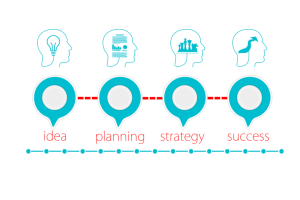Long gone are the days of mass-spamming to blog posts across the web to auto-create thousands of backlinks that would pump up your site. Back then, the idea was that any backlink is a good backlink and backlink removal was not a concern for anyone. Although these spammed links were minuscule in power, they could add up to provide your website with some serious juice.
Those days are long gone. Google has been pushing out update after update that has gradually made this type of link strategy not only useless but damaging to your site. If you create too many of these links, you will be causing some serious damage to your site’s ability to rank for competitive keywords.
The result of Google’s efforts to ghost and penalize low-quality link profiles has caused SEO experts to turn their focus towards avoiding the creation of, and deleting any existing links that would fall under the low-quality backlink standards according to Google’s eyes.
The presence of these links is placing your site at risk. Your site could be stuck on page 2, 5, or 10 because of these bad links where it would otherwise be challenging the top positions for your targeted keywords without them.
By removing these low-quality links, you will strengthen the backlinking profile of your site, remove any existing penalties that Google has placed on your site, and open up the possibility of reaching the top position for all of your targeted keywords. Google has released a tool that will allow you to do this.
Google’s Disavow Tool
The Disavow Tool was Google’s way of throwing a lifeline out to the sites that took a major hit from the Penguin update that was released a year ago. The disavow tool allows webmasters to ask Google to ignore specific links. It creates a way to effectively delete a bad link even if you are unable to physically delete it.
The true purpose of the disavow tool was to give webmasters a weapon to defend their site against negative SEO campaigns where rival sites could purposely point 100,000’s of low-quality links to a competing site in order to overtake their ranking position.
It can be used as a defense against this, and it can also be used to clean up some of the bad links that you created or purchased yourself.
Pro Tip: Advanced SEO experts have been using backlink removal tools as a way to undo certain risky link building strategies that ended up negatively affecting the site. If you buy a backlinking package and it pushes your site down the rankings, you can use the disavow tool to drop those ineffective links and start over.
You should always try to manually delete any bad links that you can remove before turning to the disavow tool. Deleting the links permanently is always better, but disavowing them is a very close second.
When looking for low-quality links to delete or disavow, look for links with:
- Too many outgoing links
- Links from sites that are no longer indexed in Google
- Links from pages with a “0” page rank
- Domains with an authority rating of below 10
- Any links that come from adult and gambling sites
These links are not providing any juice to your rankings and could be holding your site back from the rankings it should be at.
As with any other aspect of SEO, if you’re not sure what you’re doing, it’s best to consult an expert before testing out your newfound knowledge on your own money-generating sites.
Digital & Social Articles on Business 2 Community(30)
Report Post



